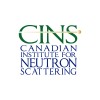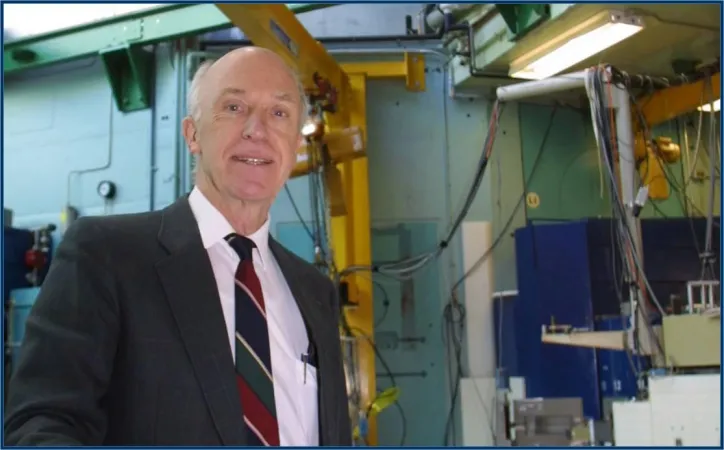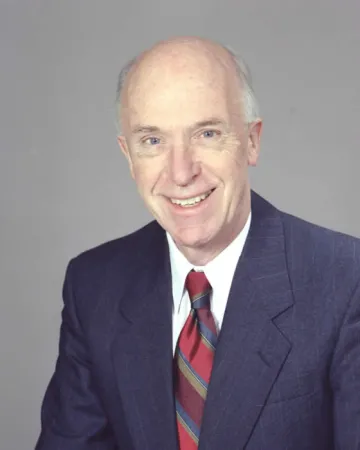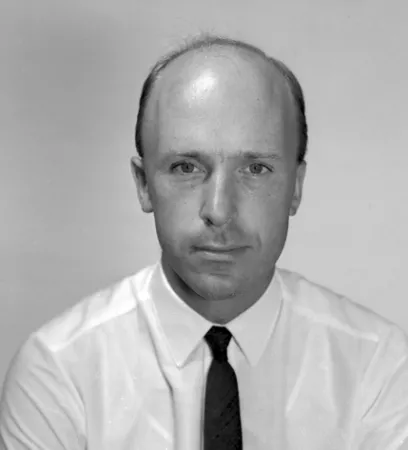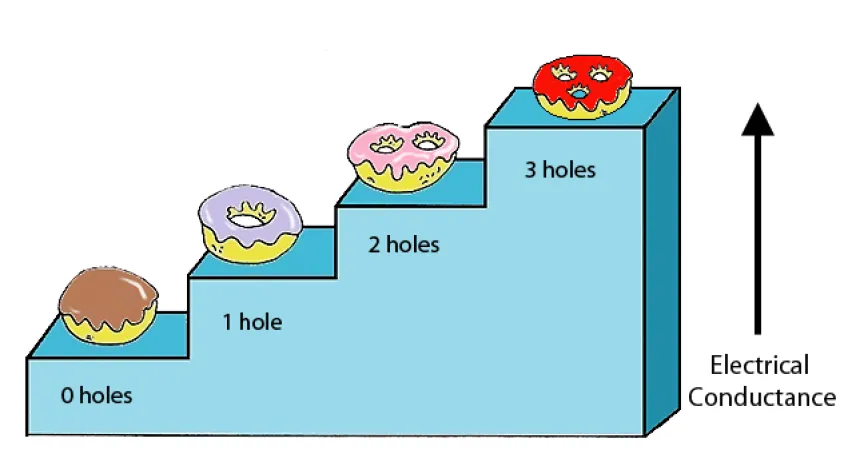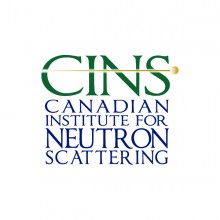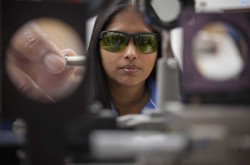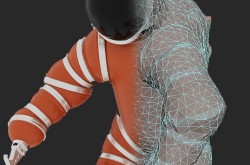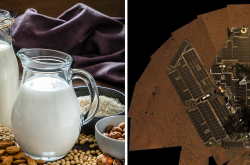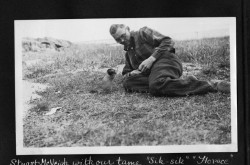Bill Buyers Contributes to 2016 Nobel-Prize Winning Research
This article was originally written and submitted as part of a Canada 150 Project, the Innovation Storybook, to crowdsource stories of Canadian innovation with partners across Canada. The content has since been migrated to Ingenium’s Channel, a digital hub featuring curated content related to science, technology and innovation.
The 2016 laureates for the Nobel Prize in Physics were three American theorists who made surprising predictions about how some materials could behave. After Canadian physicists, led by Bill Buyers, used neutron beams to experimentally confirm one of these predictions in 1985, the scientific world took notice of the theorists’ astounding claims. Since then, researchers began to classify materials based on these newfound behaviours, leading to more and more discoveries in so-called ‘topological materials’, especially in the last 10 years.
Faster, better computers in the future?
One of the many exciting possibilities for future breakthrough technology that scientists see based on these topological materials is for faster and more powerful computers and devices. For example, superconducting materials could eliminate the speed-limiting processor heat problem, or spintronic materials could enable much faster retrieval of stored data, either of which could make tomorrow’s computers much superior to those of today.
Recent developments in study of these materials are closely linked to some of the most exciting new discoveries in materials physics—including the theoretical breakthroughs recognized by the 2016 Nobel Prize. For instance, one of the insights put forth by the prize-winners was that certain materials have unique properties that can only be identified by examining the entire object (as opposed to looking at just a small sample of it). This theory disrupted longstanding scientific thought, which mistakenly held that the fundamental properties of any given material could be explained by how the molecules interacted with others in its molecular neighborhood. As a result, when the prizewinners’ theories were validated, our knowledge of fundamental physics changed forever.
To better understand this groundbreaking concept, consider the three most common states of matter: solid, liquid, and gas. If you were to examine a tiny bit of each, no matter how small, it would still look and act like either a solid, a liquid, or a gas. That’s because its state is determined by how its molecules interact with their nearest neighbours. But there are other properties of the material that you wouldn’t be able to observe this way.
For instance, if the solid material you were examining was a donut, you wouldn’t be able to tell if it had a hole (or even if it was jelly-filled) by simply looking at a piece of the dough under a microscope. In addition, since there is no such thing as a half‑hole, the number of holes can only have discrete values, such as 0, 1, 2, or 3—but never, say, 1.5. (A scientist would say that the number of holes is ‘quantized.’)
As the 2016 prizewinners demonstrated, the electrons in certain kinds of materials can organize collectively to produce properties that, like the number of holes in a donut, can only be identified by examining the object as a whole. What’s more, when measured, these properties can only take on certain discrete or quantized values, and these values are independent of the local interactions between nearby molecules. Materials with such unusual behaviours are called ‘topological’ materials.
One of the unusual behaviours seen in some topological materials relates to how they conduct electricity. Normal materials either conduct electricity or they don’t. Even a semi-conductor, whose ability to conduct electricity can be turned on and off, is either a conductor or an insulator at any given time—never both. But topological insulators can conduct and insulate simultaneously; indeed, they conduct electricity along their surface while resisting electricity everywhere else.
Topological insulators could be useful in spintronics applications for two reasons. First, the conducting electrons are ‘spin polarized,’ meaning that the directions of their spins are fixed in one of two possible directions, which in turn could be used to encode information in a device. Second, they would be incredibly resilient, since their key properties are produced by the fundamental physics of the material. In fact, attempts have been made to make devices that take advantage of the surface properties of other materials, but these attempts usually fail because surface properties are too easily ruined by defects or impurities, but the surface properties of topological insulators are nearly indestructible.
Canadian contribution to the prize-winning research
Advances in our understanding of materials requires both theory and experiment. The 2016 prize winners, David J. Thouless, F. Duncan M. Haldane, and J. Michael Kosterlitz, each of whom were UK-born physicists working in the USA, used advanced mathematics to predict the behaviour of materials that challenged conventional thinking. However, the predictions of theorists must be confirmed by experiments before the scientific community fully accepts them. Furthermore, it is often many years later that the full value their achievements is recognized.
In the 1970’s and 80’s, they challenged our understanding of how materials conduct electricity and made major contributions to understanding of superconductivity, a phenomena where some materials lose all their electrical resistance at very cold temperatures. Their models used a branch of mathematics called ‘topology’ to predict strange phenomena in ‘flat worlds’ – in extremely thin layers of materials that can be considered two-dimensional, or even one-dimensional.
In 1982, Duncan Haldane predicted that the properties of one-dimensional chains of magnetic atoms would have different properties depending on whether their atomic spins contained an even or odd number of electrons, the two types allowed by quantum physics. His prediction, that an energy gap, known as the “Haldane gap”, would form for integral values of the spin but not for half-integer spins, led to the first example of a new type of material found as a result of using topology.
At first, no one believed Haldane because physicists thought these magnetic chains were already understood.
Atomic Energy of Canada Ltd (AECL) scientist Bill Buyers, who is a UK-born physicist like the prize winners, led an investigation to verify Haldane’s prediction. He conducted the critical experiment with Rose Morra, Robin Armstrong, Mike Hogan, and Peter Gerlach, which was published in 1985. It was the first experiment to observe the Haldane gap by studying a cesium nickel halide compound (CsNiCl3) using the neutron beams at AECL’s National Research Universal (NRU) reactor at the Chalk River Laboratories. They performed the study in collaboration with the University of Toronto and with Kin Hirakawa of the University of Tokyo, Japan, who grew the CsNiCl3 crystal. They also compared their results with computer calculations by French theorists Botet and Jullien to verify that the phenomenon they observed in the crystal was indeed the Haldane gap.
Buyer’s discovery overturned the scientific wisdom of the day and gave credibility to the idea of using topology to understand materials’ behaviours. Since then, the study of topological materials has defined frontline research in condensed matter physics, especially over the last 15 years.
Buyers has received numerous honors recognizing not only this discovery but the cumulative impact of numerous scientific contributions over his career, culminating in his appointment as an Officer of the Order of Canada in 2011.


